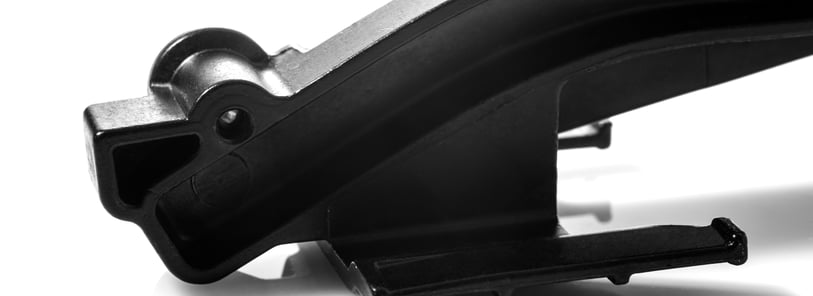As winner of numerous international awards, Bruschi Spa is known for its innovative approach in design and technology. We are glad to share our insights and experiences with the industry members.
What is black zinc treatment?
Black zinc is a zinc plating treatment which gives aesthetic and functional characteristics to products' surface. In this article we are going to deeply and technically analyze this treatment but, first of all, it could be useful to have an introduction on zinc plating main characteristics and which different types are most commonly used.
Black zinc as part of zinc plating
Different types of zinc plating
The most important purpose of zinc plating, in terms of functional characteristics, is to protect metals from corrosion effects or rust. Zinc plating is a soft, ductile, solderable corrosion resistance finish and it is used in order to protect the substrate. It is normally very thin and do not give measurable thickness to the overall coating.
Zinc plating is commonly considered a functional finishing but, thanks to its different kind of coating, could be also an aesthetic finishing.
Depending on the type of plating formulation used is possible to obtain different colors for zinc plating: hereunder different types.
- Zinc gold passivate: Yellow zinc or gold zinc is one of the most commonly used finishes for automotive sector. Gold is just the color, it is not actually contained. This finish has low contact resistance for electricity and provides a great finish for solderability.
- Black zinc: this finishing gives a black colored surface to the product itself. It gives better SSL resistance to automotive parts. See below for more info.
- Blue or clear zinc: This finish offers to surfaces a blue-ish hue. This finishing is achieved using tri-valent processes that impact less on environment but have also less corrosion resistance properties.
- Acid zinc: Its advantages as finishing regard product brightness, possibility to plate difficult substrates and lower hydrogen embrittlement of components.
Hereunder we are going to analyze in particular black treatment: this particular finishing is widely used in automotive sector.
Black zinc treatment
It is a process where thick black phosphate is conferred to the casted product against humidity and corrosive environments: it is dull and powdery in texture. It is achieved applying zinc plating and then black chromate conversion plating. The result is an uniform surface with a durable coating that provides many benefits to product or component surface.
Normally this barrier can be considered a pre-treatment, which is followed by a black chromate conversion coating.
Is possible to obtain it in different ways:
1 – Zinc plating + Black passivation
A layer of zinc (usually 8 microns) is deposed galvanically. After deposition of zinc a black passivation is performed on the zinc layer. Passivation is like a surface conversion, no additional microns to be considered.
2 – Zinc-iron plating + black or grey passivation
In this case the first layer is an alloy of ZnFe. Afterward a black or grey passivation can be achieved on the surface.
Usually the black passivation requires a further top coating (usually organic coating by immersion) to be more resistant.
3 – Zinc nickel + Black or grey passivation
Same as ZnFe, the alloy used for the first layer as ZnNi.
In addiction this, black treatment can be used for a wide range of parts such as: firearm parts and components, fittings, fasteners and automotive parts and components.
Advantages
There are many advantages of this type of finishing: hereunder we are going to explain which are.
- Dark black color: part surface can be shiny or matte depending on the finish applied
- The finish will not chip, peel, flake or rub off: it can be removed only mechanically or chemically, removing the finish itself
- Reduces light glare (reflection): this particular finishing is suitable for moving parts such as hand tools and machine parts because can reduce reflection and for this reason reduces eye fatigue and is less distracting
- Can be coated for additional protection: when used with supplementary treatments it is useful to improve product appearance, abrasion and corrosion resistance.
- Improved lubrication characteristics: black plated parts have improved lubricity and anti-galling characteristics resulting in smoother running
- No white corrosion: the finished part does not have a “white corrosion” state . For this reason black zinc is an excellent finish to be used internally on electronic components.
To learn more about die casting surface finishing and treatments, you can read these posts:
2- Die casting surface treatments: avoiding blisters, pitting and other defects in plating
Sign up now to our blog to be updated on new trends in Zinc Die Casting Industry and fill in the form to get more info about zinc die casting industry.


